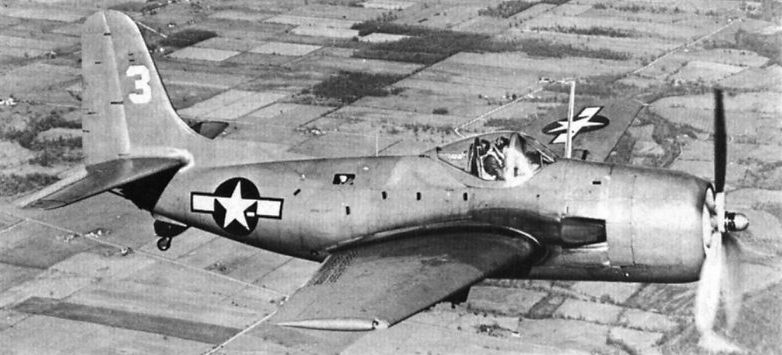
Фотографии
-
Air International 1979-07 / Plane facts
The XBT2C-1 was a deceptively large aircraft and could, in fact, accommodate a couple of passengers in the rear fuselage. A rear entry door can just be seen in the photo immediately with a passenger peering from the small window forward of and above the door.
-
Jane's All the World Aircraft 1947 / All the world's aeroplanes
The Curtiss XBT2C-1 Bomber-Torpedo Monoplane (Wright R-3350-24 engine).
-
Air International 1979-07 / Plane facts
The photograph of the XBT2C-1 with weapons bay doors open affords some indication of the considerable internal stores capacity of this experimental shipboard aircraft.
-
Jane's All the World Aircraft 1947 / All the world's aeroplanes
The Curtiss XBTC-2 Experimental Torpedo-Bomber (Pratt & Whitney R-4360-8A engine).
-
Air International 1979-07 / Plane facts
The XBTC-2 possessed no commonality with the XBT2C-1 despite being a parallel development. A noteworthy feature of this experimental shipboard aircraft was its contra-rotating propeller arrangement.
-
Air International 1979-07 / Plane facts
The XBT2C-1 was a deceptively large aircraft and could, in fact, accommodate a couple of passengers in the rear fuselage.
-
Air International 1979-07 / Plane facts
The XBTC-2 possessed no commonality with the XBT2C-1 despite being a parallel development. A noteworthy feature of this experimental shipboard aircraft was its contra-rotating propeller arrangement.







